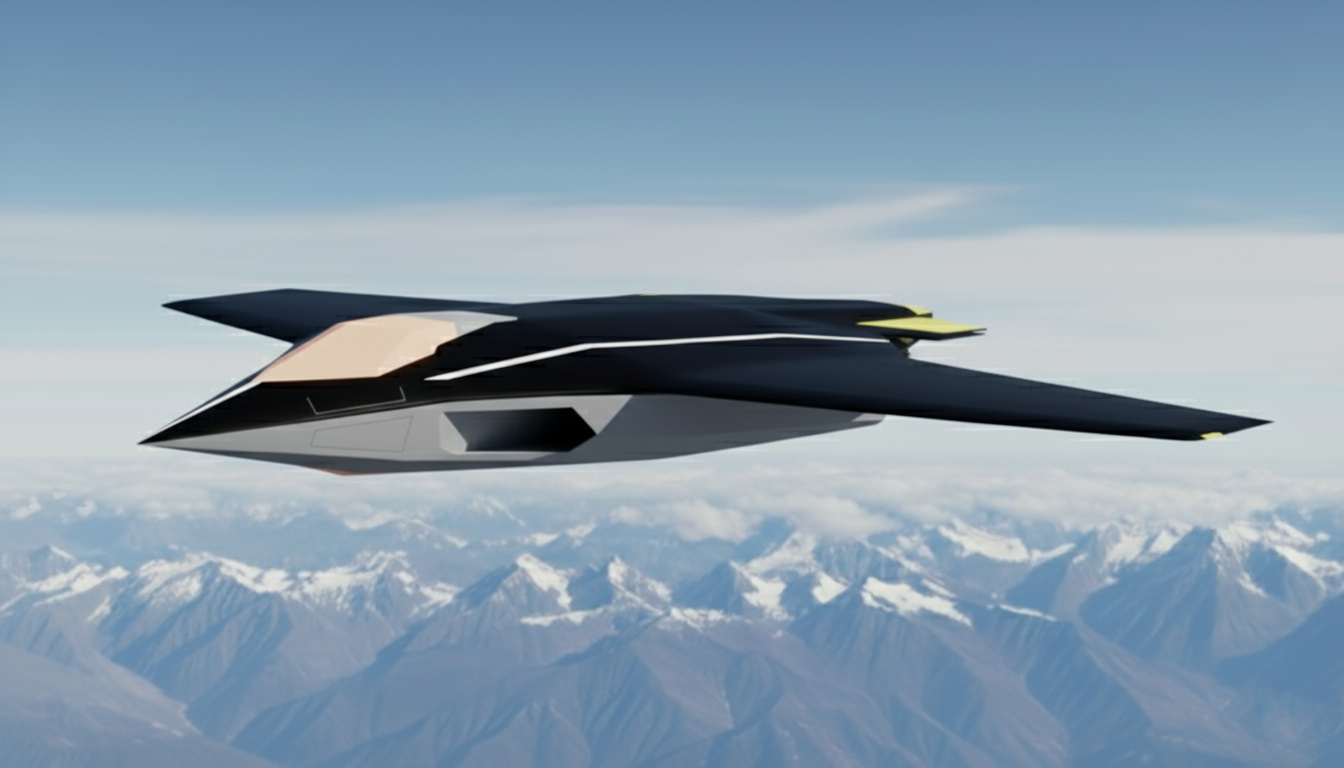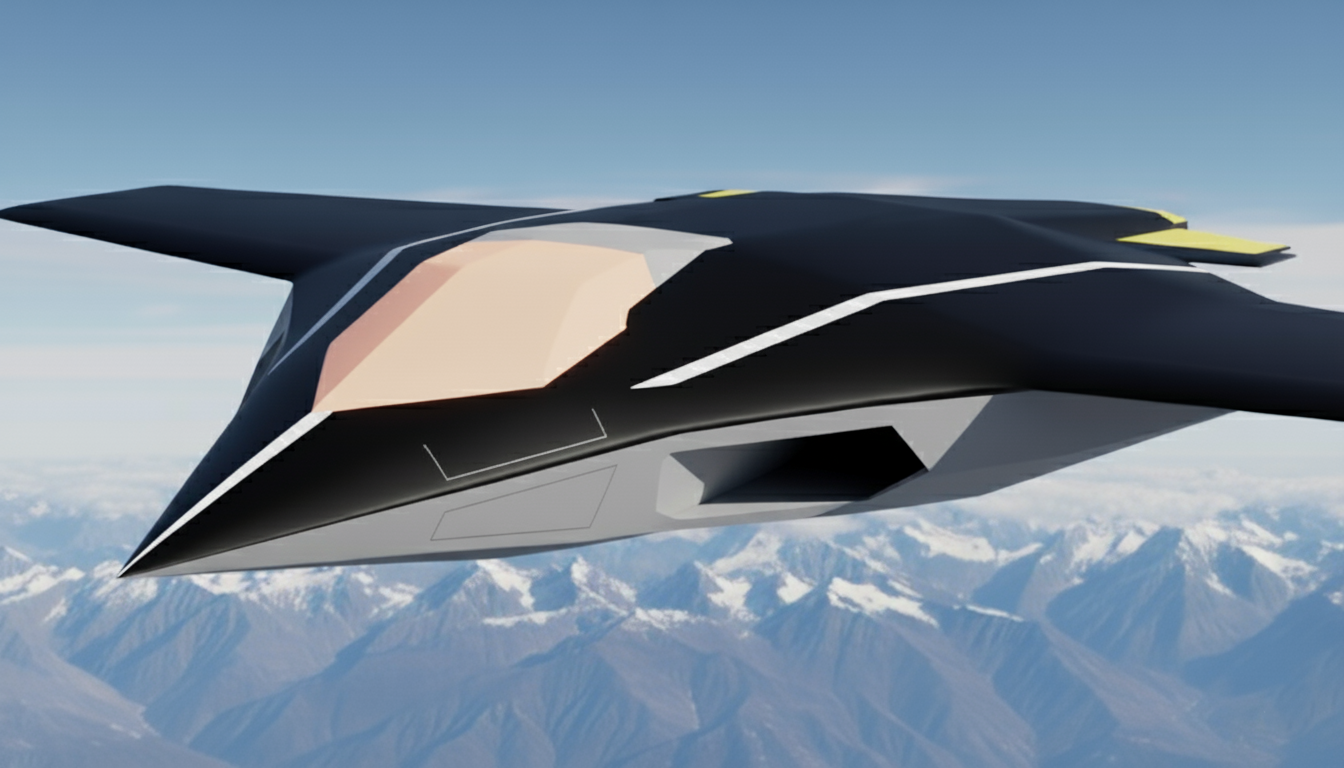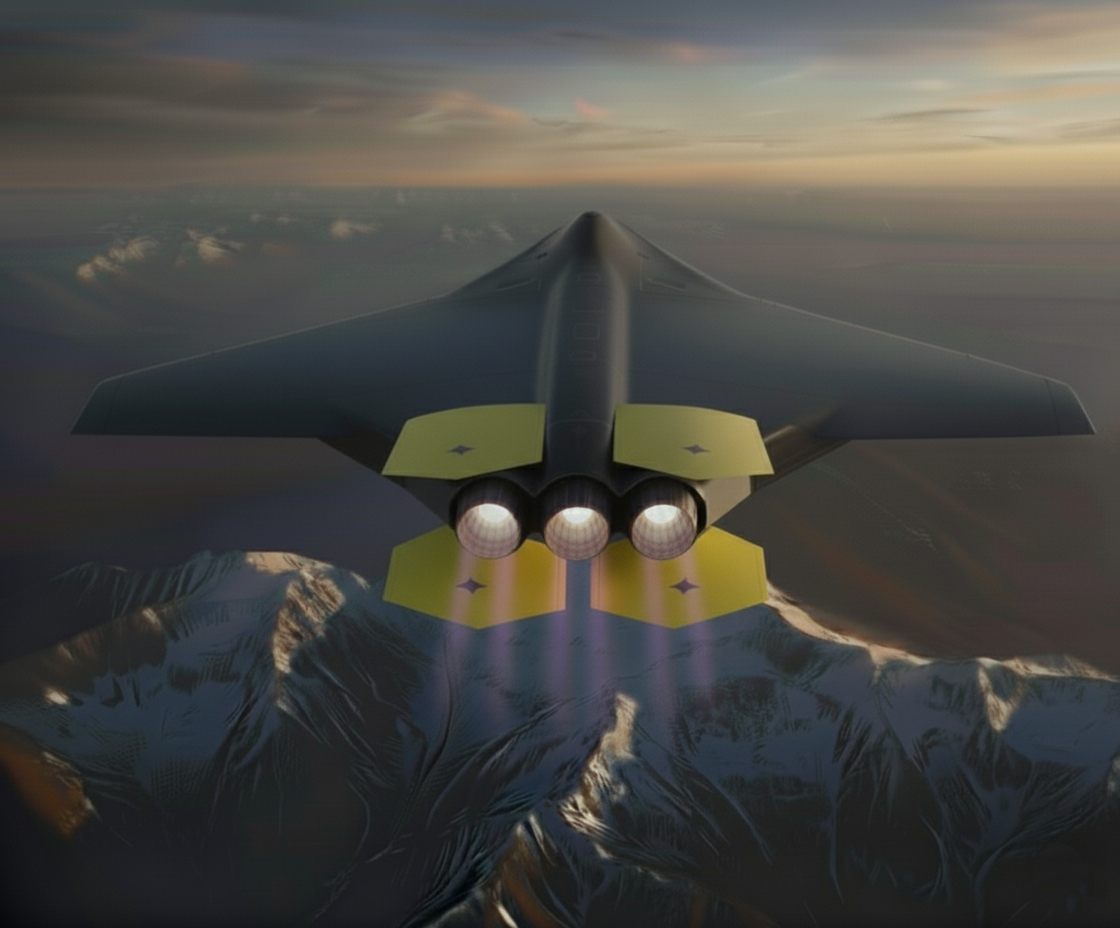-DESIGN-
Biomimetic Stealth Airframe
The M-25's airframe is the embodiment of biomimicry, drawing its core aerodynamic principles from the Razorbill sea bird. This inspiration is evident in its long, broad wings and relatively short forward fuselage, which provide exceptional lift. The most striking feature is the absence of traditional vertical stabilizers. This tail design, combined with precisely angled surfaces and advanced radar-absorbent materials, dramatically reduces the aircraft's Radar Cross-Section (RCS).
The aircraft's design avoids right angles and flat surfaces, instead utilizing a faceted and blended shape to deflect incoming radar waves away from their source.
A key innovation of the M-25 program is its dual-platform capability, designed for both piloted and autonomous operations. To ensure clear visual identification in the field, the M-25 employs a simple yet effective colour-coded cockpit system.
The piloted variant features a vibrant orange canopy, inspired by the distinctive colouring of the Razorbill's mouth.
The unmanned AI-driven drone version is fitted with a blacked-out canopy, providing instant recognition for ground crews and other air assets.
Visual Identification System
Tri-Engine Powered
At the heart of the M-25 is a tri-engine configuration, providing immense thrust and operational redundancy. Air is fed to the powerful engines through twin lateral intakes with a combined inlet diameter of 2.64 metres (104.4 inches). This design ensures maximum airflow to the engines during high-performance manoeuvres.
The platform is designed around three high-performance, afterburning turbofan engines. This power ensures exceptional performance across the entire flight envelope, from low-speed manoeuvring to supersonic speeds.
Advanced Flight Control & STOHTO
The M-25 achieves its remarkable agility through a unique flight control system. In place of vertical fins, the aircraft utilizes four independent horizontal stabilizers, two mounted above and two below the outboard engines. These surfaces act as sophisticated control surfaces for pitch, roll, and yaw authority.
This system at the same time, achieves 2D thrust vectoring capability. The control surfaces are designed to precisely redirect engine exhaust, allowing for incredible agility that far surpasses conventional aircraft. For takeoff and landing, the top mounted stabilizers, can deflect thrust downwards, generating powerful vertical lift from the rear. This gives the M-25 true Short Takeoff/Horizontal Takeoff (STOVHO) capability, enabling it to operate from snow covered runways, small naval vessels, or unprepared fields, providing unprecedented operational flexibility.
TMM-25
© 2025 Mothership-25. All Rights Reserved.
design@m-25.ca ✉
flock@m-25.ca ✉
cockpit@m-25.ca ✉
policy@m-25.ca ✉






